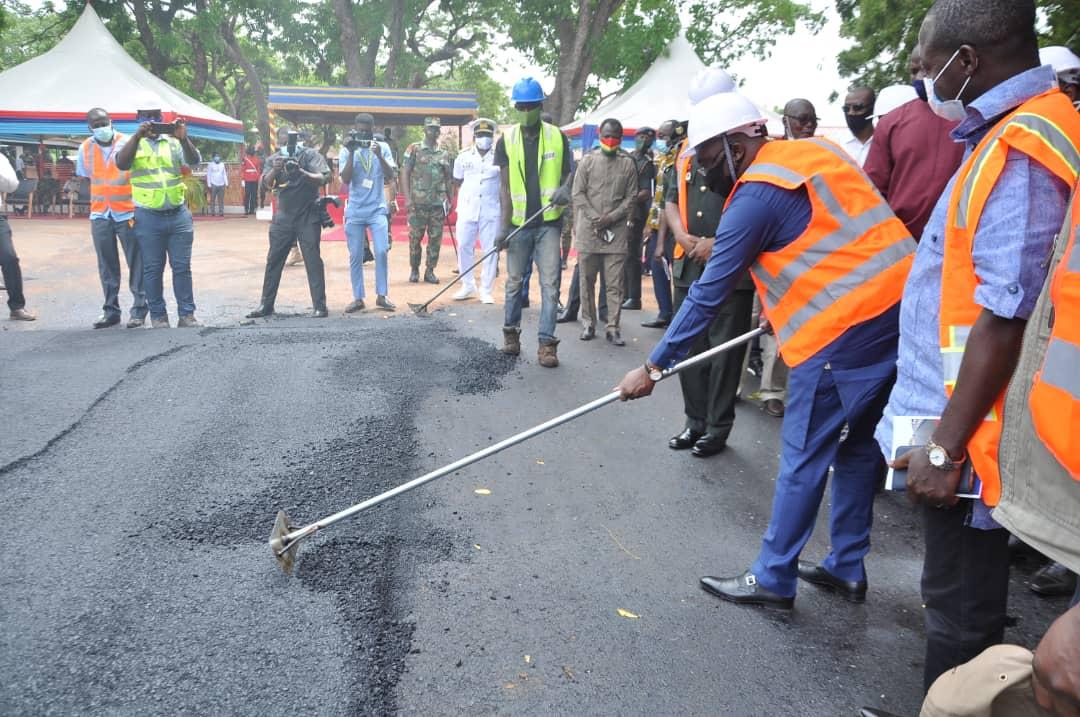
In the heavy industrial landscapes, there exists a contract, often unspoken but deeply felt. It is a covenant of sweat and brow, where employees trade the relentless application of their physical strength for a wage and a future.
For generations, the healthcare component of this contract has been, at best, a reactive safety net, a system designed to patch up wounds, to mend broken bones, and to manage the inevitable decline that follows a lifetime of demanding labor.
But this paradigm is not only morally insufficient in the 21st century, it is a profound strategic miscalculation. The future of heavy industries, from manufacturing and construction to logistics and mining, depends on a fundamental reimagining of employee healthcare, shifting from a model of repair to one of sustained resilience, where the well-being of the worker is the central pillar of operational excellence and long-term viability.
The Physicality and Dangers of Heavy Industry
The physical toll on workers in these sectors is both immediate and insidious. The acute dangers are visible and well-documented – the risk of falls from great heights, the crush of machinery, the flash of an arc weld, or the catastrophic failure of a load-bearing cable.
These incidents command attention, trigger investigations, and are the primary focus of traditional safety protocols. Yet, it is the slow, cumulative thrashings of the work environment that often exacts a greater, more pervasive toll. Consider the warehouse associate who spends a twelve-hour shift in repetitive lifting and bending, their spine subjected to constant, low-grade stress.
The eventual result is not a single, reportable accident but a debilitating chronic back injury, a torn rotator cuff, or crippling carpal tunnel syndrome. According to the U.S. Bureau of Labor Statistics, in a single recent year, musculoskeletal disorders accounted for nearly thirty percent of all workplace injury and illness cases, a figure disproportionately high in goods-producing industries (Bureau of Labor Statistics, 2022). These are not mere incidents, they are slow-motion crises that erode an employee’s quality of life and a company’s human capital.
Beyond the musculoskeletal system lies the silent scourge of particulate matter and toxic exposure. The miner, the foundry worker, the shipbuilder, they do not simply work in their environments, they inhale them. The long-term consequences are a litany of respiratory and systemic illnesses – silicosis, asbestosis, occupational asthma, and a heightened risk for various cancers.
The World Health Organization has long highlighted that a significant portion of the global burden of chronic obstructive pulmonary disease (COPD) is attributable to workplace dust, fumes, and vapours (WHO, 2022). These are illnesses with long latency periods, often manifesting years or even decades after the exposure has ceased, creating a disconnect that allows them to be conveniently sidelined as a cost of doing business rather than a preventable outcome of the work itself.
Furthermore, the very nature of the work fosters a culture that can be dismissive of its psychological weight. The pressure to meet production targets, the inherent dangers that demand hyper-vigilance, the physically exhausting shifts that leave little room for family or recuperation, all of these factors contribute to a significant, yet often unaddressed, mental health burden.
The stoic, “tough-it-out” mentality that has long been a point of pride in these sectors can become a barrier to seeking help for anxiety, depression, or substance abuse. A study published in the Journal of Occupational and Environmental Medicine found that workers in construction, in particular, have one of the highest rates of suicide among all occupational groups, a stark indicator of profound, unmitigated psychological distress (The Center for Workplace Mental Health, 2021). The body may be pushed to its limits, but so too is the mind, and a healthcare system that treats one while ignoring the other is fundamentally incomplete.
The Response
The traditional, reactive corporate response to these challenges has been a three-legged stool of workers’ compensation insurance, a basic group health plan, and a safety department focused primarily on regulatory compliance and incident reduction.
While these elements are necessary, they are no longer sufficient. Workmens’ Compensation is a system designed for the acute event, not for the chronic, degenerative condition whose origin is the daily grind. It is a bureaucratic and often adversarial process that can leave injured employees feeling marginalized and distrustful.
The standard group health plan, meanwhile, is typically a one-size-fits-all package conceived for a general population, not for a workforce with a highly specific and elevated risk profile for musculoskeletal, respiratory, and metabolic diseases. It treats symptoms but does little to prevent the onset of illness in the first place.
This reactive model is a cycle of failure, the employee suffers, the company pays for treatment and loses productivity, and the underlying causes remain unaddressed, destined to repeat.
The body may be pushed to its limits, but so too is the mind, and a healthcare system that treats one while ignoring the other is fundamentally incomplete.
The business case for a proactive, comprehensive, and integrated healthcare strategy is one of tough-minded economic imperative. The costs of the status quo are staggering and multifaceted. Direct costs include soaring insurance premiums, high workers’ compensation payouts, and elevated healthcare claims.
But the indirect costs are often even more damaging, the astronomical expense of absenteeism (when an employee does not come to work) and, more insidiously, presenteeism (when an employee is at work but physically or mentally compromised, operating at a fraction of their capacity).
A worker with chronic back pain may still clock in, but their productivity, focus, and, most critically, their safety awareness are severely diminished, creating a risk for themselves and their colleagues. The constant churn of turnover and the immense cost of recruiting and training replacements for skilled positions further bleed corporate resources. When a seasoned crane operator or master welder is lost to a preventable condition, the company loses not just a body, but a repository of irreplaceable experience and skill.
A New Paradigm
The new paradigm, therefore, must be one of holistic health preservation. This begins with a radical enhancement of on-site medical capabilities. For a large manufacturing plant or a remote mining operation, this means moving beyond the simple first-aid station.
It means establishing a fully equipped on-site clinic staffed by medical professionals who understand occupational health. These clinics should offer not just emergency response, but proactive services – pre-shift mobility screenings, physical therapy, ergonomic assessments, monitoring and management of common conditions like hypertension and diabetes that can be exacerbated by physical labour.
The goal is to bring healthcare to the point of need, reducing barriers to access and fostering a culture where maintaining one’s health is as integral to the workday as the safety briefing.
Ergonomics must evolve from a compliance checklist to a core engineering and operational principle. This involves investing in assistive technology that augments human strength and reduces strain. Exoskeletons, once the stuff of science fiction, are now being deployed in warehouses and assembly lines to support the back and shoulders during lifting tasks.
Automated guided vehicles (AGVs) and collaborative robots (Cobots) can take over the most repetitive and physically taxing material handling tasks, freeing human workers for more cognitive, value-added roles. The design of workstations, tools, and workflows must be relentlessly scrutinized through the lens of human physiology, with the active involvement of the workers themselves, who best understand the physical demands of their jobs.
As noted by the National Institute for Occupational Safety and Health (NIOSH), the concept of Total Worker Health® explicitly calls for the integration of protection from work-related safety and health hazards with the promotion of injury and illness prevention efforts to advance worker well-being (NIOSH, 2022). This is a systemic approach, not a piecemeal one.
Perhaps the most profound shift lies in the integration of robust mental and behavioural health support. This requires a deliberate effort to destigmatize mental health within the industry’s culture. Leadership must champion this from the top, speaking openly about the importance of psychological well-being and ensuring that Employee Assistance Programs (EAPs) are not just a line in an employee handbook but a vibrant, confidential, and trusted resource.
Training for supervisors should include recognizing the signs of psychological distress, from burnout and anxiety to substance abuse, and knowing how to connect their team members with help in a supportive, non-punitive manner. In an industry where a moment of lost focus can be fatal, mental sharpness is a non-negotiable asset, and its preservation is a direct contributor to safety and productivity.
The final, and most forward-thinking, component of this new model is the concept of “industrial athlete” training. We readily accept that a professional runner or football player requires a team of specialists, coaches, nutritionists, and physiotherapists etc, to optimize their performance and extend their careers.
Why should we not afford the same strategic support to an individual whose physical performance is the engine of a multi-billion dollar enterprise? Programs modelled on this concept would provide workers with targeted strength and conditioning routine designed not for vanity, but for the specific demands of their jobs. They would include education on proper nutrition to fuel sustained energy and recovery, and sleep hygiene programs to combat the fatigue that is a primary risk factor for injury.
This is an investment in human capital that pays dividends in enhanced performance, reduced injury rates, and extended career longevity.
The Business Case
Critics will inevitably point to the upfront cost of such a comprehensive approach. The investment in on-site clinics, advanced ergonomic technology, and wellness programs is not trivial. However, this view is myopic. The return on investment (ROI) manifests in powerful, measurable ways, a dramatic reduction in recordable incidents and workers’ compensation claims, leading to lower insurance premiums.
It is seen in decreased absenteeism and a surge in productivity from a healthier, more engaged workforce. It is quantified in higher retention rates, which conserve the massive resources spent on recruitment and training. Perhaps most importantly, it is reflected in a fortified corporate reputation.
In an era where talent is mobile and values-driven, companies known for genuinely investing in the well-being of their people will become magnets for the best and most dedicated workers. They become employers of choice, not employers of last resort. The heavy industries that form the bedrock of the global economy stand at a crossroads.
They can continue with the outdated, reactive model of healthcare, treating their human assets as disposable components in the industrial machine, and bear the escalating costs of injury, illness, and disengagement. Or, they can embrace a more enlightened, strategic, and ultimately more humane path.
This new path recognizes that the health of the employee and the health of the enterprise are not a zero-sum game but are inextricably linked. It is a commitment to building a culture of care that is woven into the very fabric of operations, a culture that does not just patch up its workers but actively builds their resilience, honours their sacrifice, and invests in their long-term vitality.
The muscles that power our world deserve not just our gratitude, but our mercy and our strategic foresight. By safeguarding the well-being of those who perform the most demanding work, we do not simply create better businesses; we build a stronger, more sustainable, and more equitable foundation for our joint future.
For further Reading:
- Bureau of Labor Statistics. (2022). *News Release: Employer-Reported Workplace Injuries and Illnesses – 2021*. U.S. Department of Labor. Retrieved from https://www.bls.gov/news.release/pdf/osh.pdf
- The Center for Workplace Mental Health. (2021). A Framework for Suicide Prevention in the Workplace. American Psychiatric Association Foundation. Retrieved from https://www.workplacementalhealth.org/Employer-Resources/Framework-for-Suicide-Prevention
- National Institute for Occupational Safety and Health (NIOSH). (2022). Total Worker Health. Centers for Disease Control and Prevention. Retrieved from https://www.cdc.gov/niosh/twh/default.html
- World Health Organization (WHO). (2022). Occupational Health. Retrieved from https://www.who.int/health-topics/occupational-health
The post HR Frontiers with Senyo M Adjabeng: Of muscle and mercy: Reimagining employee healthcare for the backbone of heavy industry appeared first on The Business & Financial Times.
Read Full Story


















Facebook
Twitter
Pinterest
Instagram
Google+
YouTube
LinkedIn
RSS